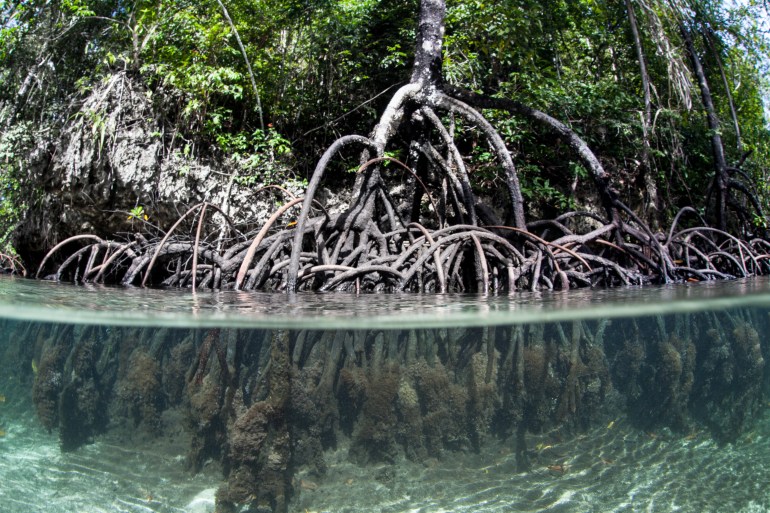Mangroves represent value and importance to the global ecosystem, and their forests are spread in saline coastal areas, tropical and subtropical all over the world, but this spread is greatly affected by climate change and the changes it causes in the ocean environment around the world.
According to a recent study by an international team of researchers led by the Belgian Vrije Universiteit Brussel and published by the journal Nature Climate Change, researchers concluded that climate change in ocean waters may affect the spread of mangroves.
The study comes after the team examined 21st century changes in ocean surface temperature, salinity and density across mangrove forests around the world.
Mangroves float or sink due to the difference between the density of breeding and the density of the surrounding water (Getty Images)
ocean water density
The results of the study indicated, according to the press release issued by the university, that changes in the density of the ocean surface may affect the distribution patterns of widely distributed mangrove species, most likely to occur in the Indo-West Pacific region, which is the main hotspot for mangrove diversity.
In a statement included in the university's statement, the researchers said that "climate change affects the density of the sea surface through changes in temperature and salinity. Because widely distributed mangrove species reproduce at a density close to the density of sea water, changes in the density of the ocean have implications for spreading The oceans are for mangroves, and the reproduction of the mangroves and whether they will float or sink depends on the difference between the density of reproduction and the density of the surrounding water.”
"Rising winter temperatures and rising sea levels are expected to affect the distribution of these carbon-rich forests, but changes in ocean surface properties may also affect dispersal patterns," the researchers add.
Highly productive intertidal mangrove forests are distributed along tropical and subtropical coasts (Getty Images)
Spread of mangroves
The university's statement explains that highly productive intertidal mangrove forests, distributed along tropical, subtropical and some temperate coasts, support a wide range of ecosystem goods and services, and have an important place in the international agenda for climate change mitigation and adaptation.
However, these intertidal forests are strongly influenced by human activities and subject to climate-driven changes, in the marine, land and air processes with which they are closely related.
While previous studies have focused on the potential impact of sea level rise, changing precipitation regimes, increased temperatures and the frequency of storms on mangrove ecosystems, the potential effects of climatic changes on seawater properties have not been considered.
On the other hand, lead researcher Dr Tom van der Stocken says: “According to our findings, this is surprising. by changing its geographical scope.
There is uncertainty about how projected changes in seawater density will affect mangrove spread (Getty Images)
"Our study provides evidence that ocean surface water density along the mangrove forests will decline by the end of the 21st century, and this factor doubles in the western Pacific meets the Indian Ocean than in the eastern Pacific meets the Atlantic," says study co-author Nico Quidam.
Dr Stocken concludes, "There is still uncertainty about how projected changes in seawater density will affect the spread of mangroves in different parts of the world, and more research is needed regarding the biological response of mangroves to climatic changes in surface water characteristics."

